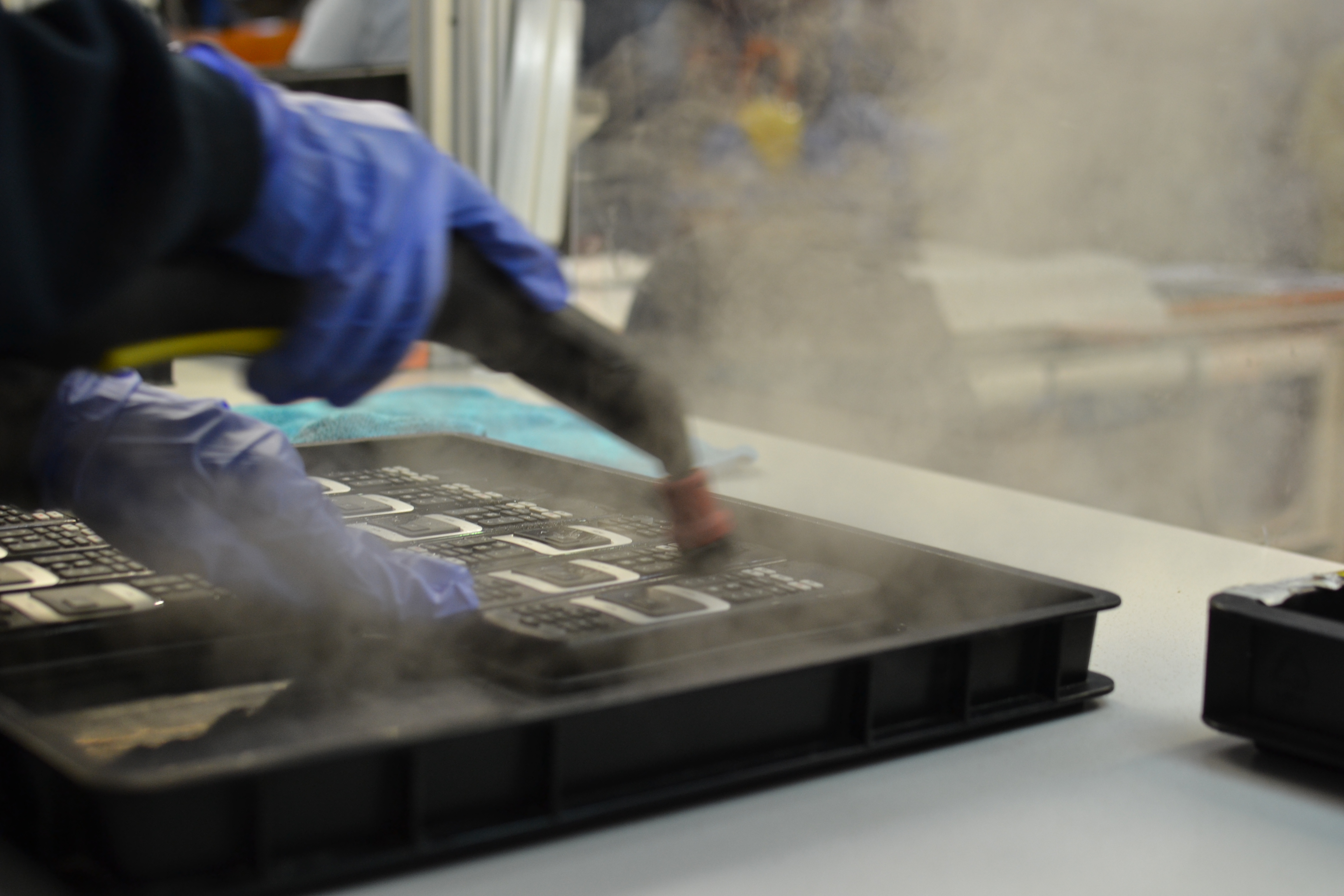
With just one click of a button, we can bring the entire world into our living room. Thanks to modems and set-top boxes. But what happens to them after they have been used? Basically, something similar to what happens to people. The answer lies with the company Teleplan in Poland.
Before Sirius Modestas lies the Horizon box, spread out like an open human body undergoing heart surgery. The shift manager has just fished cat hairs from inside. Cats love warm surfaces. In another device he came across traces of chocolate. Donning a white coat and strange bands on his wrists and ankles, the native Pole has been working for Teleplan for two years. Together with his team, he is responsible for refurbishing used boxes. This helps to avoid electrical waste and protect the environment.
The offices of Liberty Global’s refurbishment partner are located in an industrial area outside the city centre of Bydgoszcz in Poland. 360,000 people live there. Refurbishment is basically the act of restoring something to its former condition. And here’s how:
Protecting devices with anti-static bandsBefore shift manager Sirius can inject new life into the devices, he is checked for electrostatic charge. If the light on the yellow measuring device on the wall flashes green, he is not electrically charged and can start working.
It is important to carry out this test at the beginning of each shift, as electrostatic discharge can interfere with electronic devices. “We are working with sensitive technology here”, he says. Simply touching an open contact on a circuit board can be enough to ruin a component. “That’s why we have to wear special anti-static bands to earth our arms and feet while we work.”
The black and white devices that arrive in Bydgoszcz are first assigned a serial number by staff, who check the boxes for external damage, i.e. major scratches and burnt or broken connectors. A cosmetic check is then carried out by removing the cover and thoroughly inspecting the inside. Even the remote control is cleaned and disinfected. The rest is then left to the technicians.
Computers run calculations, humans run checksNick Linford is wearing a black jacket and a white shirt. As general manager, Teleplan in Bydgoszcz is his pride and joy. “My technicians are highly trained experts”, he says, pointing to a worker. This one, for example, is currently connecting a Horizon box to cables to check whether it is functioning properly. It takes a few minutes for the computer to spout out the required numbers. “Automation makes the results much more reliable than if the tests were carried out manually”, says Nick. But a human touch is still necessary. “We carefully analyse the tests and constantly try to optimise the process”, he says, clearly happy with the work of his technician.
Completing the cycleIf the computer detects a fault on a device, it ends up back in the “operating theatre”, which is the repair station here in Bydgoszcz. This is where Alexander Markiewicz works. He has been working diligently as a technician for Teleplan for over ten years. Fully focused on the task at hand, he plugs the cables and wires into the circuit board and skilfully solders the contacts together, as if solving a crossword puzzle. The box is now functioning perfectly again and looks brand new. His shift is coming to an end. A shift that has seen Alexander restore several devices back to working order. To enable us to bring the entire world into our living rooms.
Further information about Teleplan and more exciting stories can now be found in the new YOU.

